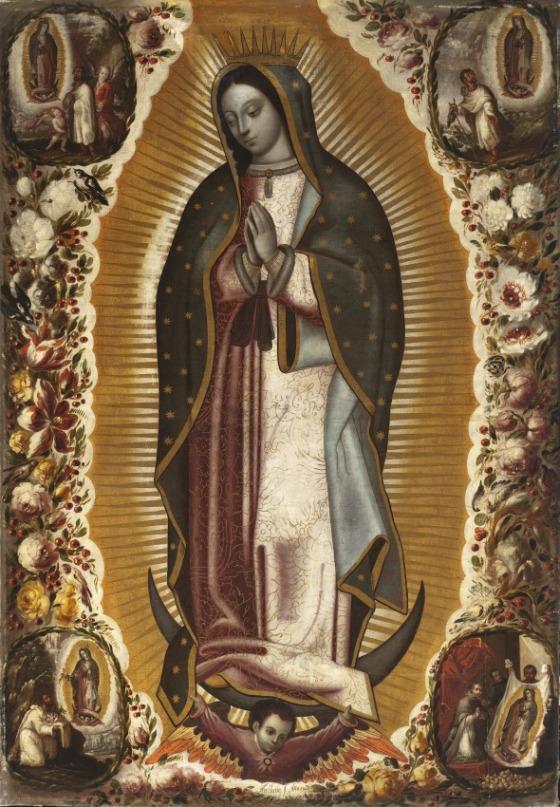The story goes something like this: in 1531, the Virgin Mary appeared before the recently converted Indian, Saint Juan Diego. This took place just north of Mexico City, on the hill of Tepeyac. She asked Juan Diego to get in touch with the Bishop Juan de Zumárraga so he could build a church in her name. The bishop said no because he didn't believe Juan Diego's story. The Virgin appeared once again to Juan Diego, who asked the bishop one more time. Again, no was the answer. The Virgin showed up a third time, but told him to give a bunch of rare flowers to the bishop as proof of their encounter and her request. Juan Diego showed the bishop, who saw the miracle of the Virgin's image imprinted on the cloth that Juan Diego used to carry the flowers. The bishop asked for the Virgin's forgiveness, and the church was built.
The story of the Virgin of Guadalupe spread throughout the 17th century, and her image was one of the most venerated throughout New Spain. Manuel Arellano, one of the most accomplished painters of Mexico, based his depiction of the Virgin on the original image from the church. Arellano was inspired by his contemporaries such as Juan Correa, who had access to the original image, in his creation of this version of the Virgin of Guadalupe. The canvas shows the Virgin with rays of light emanating from her form, all encased by a mandorla made of delicately rendered flowers. The four roundels at each corner of the frame provide a narrative of the story's important elements.
Virgin of Guadalupe (La Virgen de Guadalupe) is not currently on view, however, check out LACMA's Collections Online to learn more about this work.
This year marks LACMA's 50th anniversary. We're celebrating all that we've done while looking forward to what's in store for us in the next 50. Check back every week on Unframed to find a highlight of an artwork from LACMA's collection, which features over 120,000 objects that span time, the globe, and all cultures. This is 26/50 of the series.



